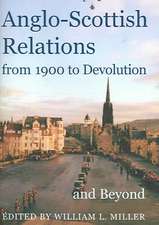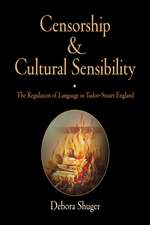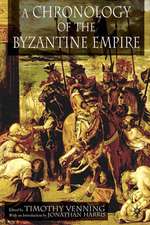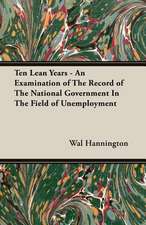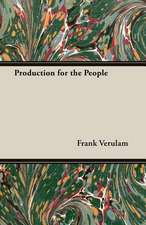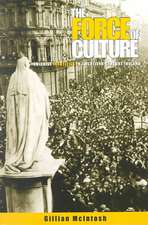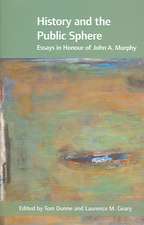Atlas of the Great Irish Famine
Autor John Crowley, William J. Smyth, Mike Murphyen Limba Engleză Hardback – 31 iul 2012
| Toate formatele și edițiile | Preț | Express |
|---|---|---|
| Hardback (2) | 421.35 lei 3-5 săpt. | +133.06 lei 6-12 zile |
| Cork University Press – iul 2012 | 421.35 lei 3-5 săpt. | +133.06 lei 6-12 zile |
| MI – New York University – 31 iul 2012 | 799.52 lei 3-5 săpt. |
Preț: 799.52 lei
Preț vechi: 1038.35 lei
-23% Nou
Puncte Express: 1199
Preț estimativ în valută:
152.98€ • 159.73$ • 126.62£
152.98€ • 159.73$ • 126.62£
Carte disponibilă
Livrare economică 14-28 martie
Preluare comenzi: 021 569.72.76
Specificații
ISBN-13: 9780814771488
ISBN-10: 0814771483
Pagini: 728
Dimensiuni: 249 x 304 x 54 mm
Greutate: 3.7 kg
Editura: MI – New York University
Locul publicării:Washington Square, NY, United States
ISBN-10: 0814771483
Pagini: 728
Dimensiuni: 249 x 304 x 54 mm
Greutate: 3.7 kg
Editura: MI – New York University
Locul publicării:Washington Square, NY, United States
Descriere
The Great Irish Famine is the most pivotal event in modern Irish history, with implications that cannot be underestimated. Over a million people perished between 1845-1852, and well over a million others fled to other locales within Europe and America. By 1850, the Irish made up a quarter of the population in Boston, New York City, Philadelphia, and Baltimore. The 2000 US census had 41 million people claim Irish ancestry, or one in five white Americans. Atlas of the Great Irish Famine (1845-52) considers how such a near total decimation of a country by natural causes could take place in industrialized, 19th century Europe and situates the Great Famine alongside other world famines for a more globally informed approach. The Atlas seeks to try and bear witness to the thousands and thousands of people who died and are buried in mass Famine pits or in fields and ditches, with little or nothing to remind us of their going. The centrality of the Famine workhouse as a place of destitution is also examined in depth. Likewise the atlas represents and documents the conditions and experiences of the many thousands who emigrated from Ireland in those desperate years, with case studies of famine emigrants in cities such as Liverpool, Glasgow, New York and Toronto. The Atlas places the devastating Irish Famine in greater historic context than has been attempted before, by including over 150 original maps of population decline, analysis and examples of poetry, contemporary art, written and oral accounts, numerous illustrations, and photography, all of which help to paint a fuller picture of the event and to trace its impact and legacy. In this comprehensive and stunningly illustrated volume, over fifty chapters on history, politics, geography, art, population, and folklore provide readers with a broad range of perspectives and insights into this event.
Recenzii
"This monumental work is far more than an Atlas, it is the definitive summary of all aspects of the Great Irish Famine. The many maps are accompanied by accessible yet scientifically sound texts. The demographics and geography are surveyed with unequaled detail and care, yet the historical background, the politics, and the economics of the Famine are discussed at an equally high scholarly level. Lavishly illustrated and scholarly immaculate, written by the best scholars in the field, this volume belongs in the library of everyone interested in the greatest natural disaster of the modern age."-Joel Mokyr, Northwestern University
"This Atlas offers a powerful, unflinching and coherent understanding of the Irish Famine as the defining event in Irish history. It balances sweeping survey with minute details, while always attending to the surprising diversity of this small island in the mid nineteenth century. Its unparalleled assemblage of new maps, old images and extensive documentation offers a brilliant teaching aid for the history of Ireland and of the Irish diaspora. Firmly rooted in recent research, saturated in meticulous scholarship, and interdisciplinary in the best sense, it is unafraid to draw the necessary trenchant conclusions. Its broad synthesis offers the best overview we have ever had of this traumatic and defining episode."-Kevin Whelan, Keough Naughton Notre Dame Centre, Dublin
"Cork University Press has established an enviably high reputation in producing atlases. The latest - of the Great Irish Famine - maintains and enhances this record. Not only are the maps themselves innovative and attractive to look at, but they communicate clearly an abundance of information, often unfamiliar. The cartography is accompanied by a wealth of other images, sometimes strikingly beautiful, and also hauntingly distressful. In addition, a starry cast of experts provides incisive and illuminating commentary on all aspects of the disaster. All in all, this is likely to prove one of the most original and enduring studies of the grievous famine."-Toby Barnard, Oxford University
"Crowley, William J. Smyth, and Mike Murphy (geography, geography emeritus, and cartographer, geography, respectively, University Coll., Cork, Ireland) have made a valuable contribution to studies of the Irish famine of the 1840s with this physically immense book that combines a classic atlas's functions with broader concerns." -"Library Journal",
"This Atlas offers a powerful, unflinching and coherent understanding of the Irish Famine as the defining event in Irish history. It balances sweeping survey with minute details, while always attending to the surprising diversity of this small island in the mid nineteenth century. Its unparalleled assemblage of new maps, old images and extensive documentation offers a brilliant teaching aid for the history of Ireland and of the Irish diaspora. Firmly rooted in recent research, saturated in meticulous scholarship, and interdisciplinary in the best sense, it is unafraid to draw the necessary trenchant conclusions. Its broad synthesis offers the best overview we have ever had of this traumatic and defining episode."-Kevin Whelan, Keough Naughton Notre Dame Centre, Dublin
"Cork University Press has established an enviably high reputation in producing atlases. The latest - of the Great Irish Famine - maintains and enhances this record. Not only are the maps themselves innovative and attractive to look at, but they communicate clearly an abundance of information, often unfamiliar. The cartography is accompanied by a wealth of other images, sometimes strikingly beautiful, and also hauntingly distressful. In addition, a starry cast of experts provides incisive and illuminating commentary on all aspects of the disaster. All in all, this is likely to prove one of the most original and enduring studies of the grievous famine."-Toby Barnard, Oxford University
"Crowley, William J. Smyth, and Mike Murphy (geography, geography emeritus, and cartographer, geography, respectively, University Coll., Cork, Ireland) have made a valuable contribution to studies of the Irish famine of the 1840s with this physically immense book that combines a classic atlas's functions with broader concerns." -"Library Journal",

